Programming Language Trends: The Top In-Demand Programming Languages
In the dynamic realm of technology, remaining abreast of the most recent programming languages holds immense significance for both technology experts and passionate enthusiasts. As businesses persist in adopting digital evolution, the call for adept developers well-versed in particular programming languages continues its upward trajectory. This article will delve into the prevailing trends in programming languages and investigate the foremost sought-after languages that are exerting a profound influence on the trajectory of software development in the modern era.
JavaScript
JavaScript, frequently hailed as the “web’s language,” has experienced a remarkable metamorphosis since its inception. Starting as a rudimentary scripting language for augmenting web pages, it has evolved into a versatile, fully-fledged programming language deployed across a multitude of applications. JavaScript now stands as an integral pillar of contemporary software development. Within this article, we will embark on a journey through the evolution and enduring significance of JavaScript, delving into its wide-ranging utility, expanding ecosystem, and its pivotal role in molding the digital terrain.
JavaScript’s Journey: From Scripting to Full-Stack Powerhouse
JavaScript came into existence during the mid-1990s with the primary objective of introducing interactivity to web pages. In a short span, it emerged as an indispensable tool for web developers, facilitating dynamic content updates and user engagement. Nevertheless, during its early stages, its functionalities were confined to client-side scripting exclusively within web browsers.
Over the years, JavaScript underwent a remarkable evolution:
1. The Rise of Frameworks and Libraries:
The advent of libraries such as jQuery and subsequently, frameworks like Angular, React, and Vue.js, brought about a revolution in front-end development. These resources streamlined intricate processes, thereby simplifying the construction of interactive and adaptable web applications.
2. Server-Side JavaScript:
The arrival of Node.js in 2009 marked a significant milestone by extending JavaScript to the server-side, granting developers the ability to employ a unified language for both client and server development. This breakthrough unlocked fresh opportunities for constructing scalable and high-performance applications.
3. JavaScript Beyond the Web:
JavaScript transcended its original role as a web scripting language. It found applications in mobile app development (with technologies like React Native and Ionic), desktop app development (with Electron), and even game development (with engines like Phaser and Three.js).
4. The Era of Progressive Web Apps (PWAs):
JavaScript played a pivotal role in the emergence of PWAs, which combine the best of web and mobile app experiences. PWAs leverage JavaScript’s capabilities to deliver fast, offline-capable, and engaging web applications.
5. JavaScript and the Cloud:
JavaScript has also become instrumental in cloud computing, with platforms like AWS Lambda and serverless computing relying on JavaScript for scripting serverless functions.
6. Machine Learning and AI:
JavaScript is making strides in the realm of machine learning and artificial intelligence thanks to libraries such as TensorFlow.js and Brain.js. These resources empower developers to construct AI-driven applications directly within web browsers.
The Thriving JavaScript Ecosystem
The prosperity of JavaScript can be partially attributed to its thriving and extensive ecosystem. Within this ecosystem lies an extensive collection of open-source libraries and packages, conveniently accessible through package managers like npm. This ecosystem serves as a breeding ground for innovation, expedites development processes, and grants developers the capability to craft applications replete with advanced features.
The Future of JavaScript
As JavaScript continues its evolution, it retains its position as a leader in technological progress. The language is on the verge of assuming a central role in emerging fields, such as WebAssembly, which facilitates high-performance, near-native code execution within web browsers. Furthermore, ongoing standardization initiatives are improving JavaScript’s capabilities, rendering it even more adept at handling complex applications.
In conclusion, JavaScript’s development from a crude programming language to a strong, flexible tool emphasizes its continued significance. By spreading its impact well beyond the limitations of online browsers and retaining a large presence in the digital sphere, it has significantly changed the landscape of web development. The constantly developing capabilities of JavaScript provide a wide range of opportunities for innovative thinking and the development of cutting-edge software solutions, regardless of your level of programming expertise.
Python
Python, renowned for its straightforwardness and legibility as a programming language, has asserted itself as a formidable force within the technology realm. It has transcended its modest origins as a scripting language, gaining recognition for its adaptability and relevance across various domains. Within this blog post, we will delve into the enduring allure of Python, its wide-ranging uses, and the essential role it assumes in influencing both current and future directions in software development.
Python’s Journey: From Beginner-Friendly to Industry Favorite
Python came into existence in the latter part of the 1980s and garnered acclaim thanks to its clean and comprehensible syntax. Its simplicity rendered it an ideal selection for novices, swiftly establishing itself as the preferred language for introductory programming courses. Nevertheless, Python’s evolution did not conclude with its reputation as a beginner-friendly language; it metamorphosed into a versatile instrument for developers spanning diverse domains:
1. Web Development with Django and Flask:
Python’s web frameworks, Django and Flask, have instigated a transformative shift in web development. They equip developers with the capability to swiftly construct web applications that are not only scalable and secure but also brimming with features. Python’s readability plays a pivotal role in facilitating efficient development and seamless maintenance.
2. Data Science and Machine Learning:
Python has advanced to the forefront of data analysis and machine learning because to its data science libraries, including NumPy, pandas, Matplotlib, and scikit-learn. The addition of TensorFlow and PyTorch has improved Python’s reputation in the domains of deep learning and artificial intelligence.
3. Scientific Computing and Research:
Thanks to libraries like SciPy and the versatile Jupyter Notebook, Python enjoys widespread adoption as the preferred choice for scientific computing and research. Python serves as an invaluable research tool, facilitating tasks such as data analysis, experimentation, and the visualization of results.
4. Automation and Scripting:
Python’s simplicity makes it an ideal language for automating repetitive tasks and scripting. It’s widely used for tasks like system administration, file manipulation, and data extraction.
5. Game Development with Pygame:
Pygame, a Python library, enables game development. It simplifies the creation of 2D games and has a passionate community of game developers.
6. Internet of Things (IoT):
Python’s lightweight nature and extensive library support make it suitable for IoT applications. Developers use it to program IoT devices and build smart solutions.
7. Cybersecurity and Ethical Hacking:
Python is a valuable tool in cybersecurity. Ethical hackers use Python for penetration testing, vulnerability assessment, and creating security tools.
8. Desktop Application Development:
Libraries like Tkinter and PyQt enable Python to be used in desktop application development, offering cross-platform compatibility.
Python’s Community and Ecosystem
Python’s popularity is further bolstered by its vast and active community. Developers worldwide contribute to its ecosystem, creating an abundance of open-source packages available through the Python Package Index (PyPI). This rich repository of libraries and frameworks empowers Python developers to work efficiently across domains.
The Future of Python
The adventure of Python is far from done. It keeps changing, adjusting to new trends and technology. Python is playing a more and bigger part in industries like edge computing, blockchain, and quantum computing. Python will continue to be a top choice for developers and businesses looking to innovate and tackle complicated problems because to its simplicity of use and strong community support.
In summary, Python’s adaptability has propelled it from an introductory language for beginners to a prevailing entity in the field of technology. Its impact encompasses web development, data science, artificial intelligence, and numerous other domains. Whether you are an experienced developer or embarking on your programming expedition, Python’s diverse applications render it a language of great value, unveiling a realm of opportunities within the sphere of software development.
C#
C#, commonly pronounced as “C sharp,” stands as a programming language that has transformed into a fundamental building block of contemporary software development. Emerging from the innovations of Microsoft, C# has transcended its original boundaries, evolving into a versatile and robust language employed across diverse domains. Within this blog post, we will delve into the evolution of C#, explore its wide-ranging applications, and recognize its ongoing influence in shaping the terrain of software development.
A Language with a Microsoft Heritage
Microsoft unveiled C# in the early 2000s as an integral component of the .NET initiative. Its design emphasized simplicity, robust type-safety, and heightened productivity. Across the years, it has grown inseparable from Microsoft’s technological landscape, serving as the predominant language for crafting Windows applications. Nonetheless, C#’s impact transcends the confines of the Windows ecosystem:
1. Windows Application Development:
C# remains a fundamental language for developing Windows applications, including desktop software and Universal Windows Platform (UWP) apps. The Windows Presentation Foundation (WPF) and Windows Forms frameworks provide powerful tools for building rich, graphical user interfaces using C#.
2. Web Development with ASP.NET:
ASP.NET, a web framework powered by C#, allows developers to create dynamic and feature-rich web applications. ASP.NET Core, the cross-platform version of ASP.NET, has further expanded C#’s reach in web development.
3. Game Development with Unity:
Unity, a popular game development engine, uses C# as its primary scripting language. Developers create interactive 2D and 3D games for various platforms, including mobile, console, and PC, using C#.
4. Cross-Platform Development:
Xamarin, now a part of Microsoft, enables cross-platform mobile app development using C#. Developers can target Android and iOS platforms with a single codebase, enhancing efficiency and code reuse.
5. IoT and Embedded Systems:
C# is making strides in the Internet of Things (IoT) domain. The .NET Micro Framework and .NET Nano Framework enable C# development for resource-constrained devices.
6. Cloud Computing with Azure:
C# is a preferred language for building cloud applications on Microsoft Azure. Azure Functions, Azure App Service, and other services offer C# support for cloud-native development.
7. Scientific and Enterprise Applications:
C# is well-suited for building scientific computing applications and enterprise software due to its strong typing, rich libraries, and robust tooling.
8. Cross-Platform Compatibility:
With the advent of .NET 5+ (now known as .NET 6, .NET 7, etc.), C# has embraced cross-platform development, enabling code to run on Windows, macOS, and Linux.
The Strength of the C# Ecosystem
C#’s strength lies not only in the language itself but also in its vast ecosystem. The .NET Framework and the .NET Core/.NET 5+ (now known as .NET) ecosystems provide a wealth of libraries, frameworks, and tools that empower developers to tackle a wide range of challenges.
The Future of C#
C# continues to evolve with the changing landscape of technology. Features like asynchronous programming (async/await), language enhancements, and cross-platform capabilities ensure that C# remains a relevant and powerful language for the future.
In summary, C# has risen above its original Windows-centric orientation to become a language prized for its adaptability, efficiency, and strong alignment with the Microsoft ecosystem. It stands as the preferred choice for a diverse range of applications, be it the development of desktop software, web applications, games, or cloud services. With C#, developers are equipped to forge inventive and resilient solutions in the dynamic realm of software development.
TypeScript
TypeScript, frequently referred to as “JavaScript with enhanced capabilities,” has swiftly risen to prominence within the domain of web development. Originating from a requirement for more resilient and sustainable JavaScript code, TypeScript has assumed a transformative role that benefits both front-end and back-end developers. Within this blog post, we will delve into the ascension of TypeScript, its potent attributes, and the far-reaching influence it has exerted on contemporary JavaScript development.
The Birth of TypeScript
TypeScript was developed by Microsoft and first released in 2012. It was created to address some of the challenges developers faced with JavaScript, such as the absence of strong typing, which often led to runtime errors that were challenging to detect and debug.
TypeScript’s Key Features:
- Static Typing: TypeScript introduces static typing to JavaScript, allowing developers to define types for variables, function parameters, and return values. This not only enhances code readability but also catches many potential errors at compile time.
- Enhanced Tooling: TypeScript is supported by a wide range of development tools, including powerful Integrated Development Environments (IDEs) like Visual Studio Code. These tools provide features such as code completion, error checking, and automatic refactoring, which streamline the development process.
- Improved Maintainability: With its strong typing and code organization features, TypeScript makes large codebases more maintainable. Developers can better understand and modify existing code without fear of inadvertently introducing bugs.
- ES6+ Compatibility: TypeScript supports the latest ECMAScript (ES6 and beyond) features, ensuring that developers can take advantage of modern JavaScript capabilities while benefiting from static typing.
- Interfaces and Abstraction: TypeScript allows developers to define interfaces, abstract classes, and inheritance hierarchies, enabling the creation of complex, well-structured software architectures.
- Rich Ecosystem: TypeScript has a thriving ecosystem with a wide array of third-party libraries and frameworks that have adopted TypeScript, including Angular, React, and Node.js.
TypeScript in Practice
TypeScript has found applications in various domains:
- Front-End Development: Many front-end developers have embraced TypeScript for building robust and maintainable web applications. Popular front-end frameworks like Angular and React offer strong TypeScript support.
- Back-End Development: TypeScript is not limited to the front end. It is increasingly used in back-end development, with technologies like NestJS—a server-side framework for Node.js—leveraging TypeScript’s benefits.
- Full-Stack Development: TypeScript’s ability to run on both the client and server-side (Node.js) makes it a compelling choice for full-stack development, promoting code reuse and consistency.
- Large Codebases: Organizations with large codebases have adopted TypeScript to enhance code quality and maintainability. It provides tools for gradual adoption, allowing developers to introduce TypeScript into existing JavaScript projects.
The Future of TypeScript
TypeScript’s popularity shows no signs of waning. As JavaScript continues to evolve, TypeScript is expected to evolve with it, providing developers with a strong and reliable option for building modern web applications.
In summary, TypeScript has reshaped the JavaScript development arena. Its amalgamation of static typing, robust tooling support, and alignment with contemporary JavaScript functionalities positions it as an essential instrument for developers striving to produce sustainable, error-free code. Whether engaged in the creation of front-end web applications, back-end services, or comprehensive full-stack solutions, TypeScript empowers developers to elevate their JavaScript development to unparalleled levels of proficiency.
Java
Java, a programming language with a history spanning more than two decades, continues to maintain a prominent position in contemporary software development. Recognized for its platform agnosticism, resilience, and scalability, Java has adeptly adjusted to the dynamic technological terrain and continues to be a guiding influence in an industry that constantly evolves. Within this blog post, we shall embark on a voyage into the realm of Java, investigating its lasting significance, diverse applications, and contributions to the expansive ecosystem of software development.
Java’s Enduring Legacy
Java made its debut in the mid-1990s, courtesy of Sun Microsystems, with the visionary principle of “Write Once, Run Anywhere” (WORA). This vision materialized due to Java’s distinctive architecture: it compiles source code into an intermediate bytecode, which is executable on any platform equipped with a Java Virtual Machine (JVM). The ability to function seamlessly across various platforms has undeniably been a hallmark of Java’s triumph.
Key Features and Strengths of Java:
- Platform Independence: Java’s bytecode can run on a multitude of platforms, including Windows, macOS, Linux, and more. This independence is invaluable for developing cross-platform applications.
- Strong Typing and Reliability: Java enforces strong typing, reducing the likelihood of runtime errors. Its strict type-checking system enhances code reliability and maintainability.
- Robustness and Exception Handling: Java’s robust error-handling mechanisms, including checked and unchecked exceptions, ensure that applications can gracefully recover from unexpected issues.
- Scalability and Performance: Java is well-suited for building scalable, high-performance systems. Technologies like Java Enterprise Edition (EE) cater to enterprise-level applications.
- Rich Ecosystem: Java boasts a rich ecosystem of libraries and frameworks, such as Spring, Hibernate, and Apache Struts, which accelerate development and simplify complex tasks.
- Community and Open Source: Java has a vibrant and active community, contributing to open-source projects like OpenJDK. This community-driven approach fosters innovation and keeps Java up to date.
Applications Across the Spectrum
Java’s adaptability has enabled it to find applications in diverse domains:
- Web Development: JavaServer Pages (JSP) and servlets are used for building dynamic web applications. Java EE frameworks like Jakarta EE provide comprehensive solutions for web development.
- Mobile Development: Java’s legacy in mobile app development includes Android, where it serves as the primary programming language for millions of mobile devices.
- Enterprise Solutions: Java Enterprise Edition (EE) facilitates the development of large-scale, mission-critical enterprise applications.
- Scientific Computing: Java’s extensive libraries and numerical computing capabilities make it suitable for scientific and computational tasks.
- Big Data and Apache Hadoop: Java plays a significant role in big data processing and analysis, particularly with the Apache Hadoop ecosystem.
- Internet of Things (IoT): Java’s portability extends to IoT devices, making it a viable choice for developing IoT applications.
The Future of Java
Java continues to evolve with the changing technological landscape. The release cadence of Java has accelerated, with frequent updates introducing new features and improvements. Project Loom aims to simplify concurrency, while Project Valhalla focuses on enhancing memory efficiency. These efforts demonstrate Java’s commitment to staying relevant in a fast-paced industry.
In conclusion, Java’s journey from its inception to its current state as a versatile and influential programming language is a testament to its enduring value. Whether you’re building web applications, mobile apps, enterprise solutions, or delving into emerging technologies, Java remains a robust and reliable choice, powering the modern world of software development.
Go (Golang)
Go, commonly known as Golang, has surfaced as a programming language that seamlessly blends simplicity, performance, and effectiveness, adeptly addressing the demands of contemporary software development. Developed by Google, Go has rapidly garnered favor among developers, courtesy of its uncomplicated syntax and potent capabilities. Within this blog post, we will embark on a journey into the realm of Go, shedding light on its advantages, applications, and influence on the evolving landscape of software development.
The Birth of Go
Go was first announced by Google in 2007 and officially released in 2009. It was designed with the goal of addressing the challenges faced by developers in terms of efficiency and productivity, particularly for large-scale systems and concurrent programming.
Key Features and Strengths of Go:
- Simplicity and Readability: Go’s syntax is deliberately simple and minimalistic, making it easy to read and write code. This simplicity reduces the learning curve for developers.
- Concurrency Support: Go natively supports concurrency through goroutines and channels, simplifying the development of concurrent and parallel applications.
- Efficient Compilation: Go compiles quickly to machine code, resulting in fast startup times and efficient resource utilization.
- Strong Standard Library: Go comes with a rich standard library that includes packages for networking, cryptography, data serialization, and more, enabling developers to build robust applications without relying heavily on third-party libraries.
- Garbage Collection: Go includes a garbage collector that manages memory automatically, reducing the risk of memory leaks and making it suitable for systems programming.
- Cross-Platform Compatibility: Go is designed to be cross-platform, allowing developers to write code that runs consistently across different operating systems.
Applications Across Domains
Go’s versatility has led to its adoption in various domains:
- Web Services and APIs: Go’s efficiency and performance make it an excellent choice for building web servers and microservices. Popular web frameworks like Gin and Echo simplify web development in Go.
- Distributed Systems: Go is well-suited for developing distributed systems, thanks to its native support for concurrency and communication between components.
- Cloud Computing: Go is a favored language for developing cloud-native applications and services. It’s used by cloud providers like Google Cloud and AWS for various infrastructure-related tasks.
- Containerization and Kubernetes: Go is the language of choice for tools like Docker and Kubernetes, which have become integral to containerization and container orchestration.
- Networking and IoT: Go’s efficient networking capabilities make it suitable for building networking tools and applications. It is also utilized in IoT device programming.
- System Utilities: Go is used to develop command-line utilities and system-level tools due to its efficiency and ease of use.
The Future of Go
Go continues to grow in popularity and is frequently used in modern software development stacks. Its efficient runtime and ease of use make it a valuable tool for building scalable and performant applications.
In summary, Go (Golang) stands out as a programming language that streamlines contemporary software development while maintaining an unwavering commitment to performance and effectiveness. Whether your focus is on crafting web services, developing distributed systems, or building cloud-native applications, Go offers a resilient and accessible foundation for addressing the complexities of the digital era. This makes it a language that merits exploration for developers, both seasoned and new, seeking innovative solutions in the ever-evolving software development landscape.
Rust
Rust, a comparatively youthful programming language, has created a significant stir within the software development realm due to its steadfast focus on safety, performance, and the incorporation of contemporary programming principles. Crafted to tackle the complexities of concurrent and systems-level programming, Rust has swiftly cultivated a devoted community of developers and witnessed adoption across diverse sectors. Within this blog post, we shall venture into the domain of Rust, delving into its distinct attributes, applications, and its momentous influence on the ever-evolving landscape of software development.
The Rise of Rust
Mozilla introduced Rust in 2010, and it achieved its 1.0 milestone in 2015. Its inception stemmed from the aspiration to craft a systems programming language that eradicates prevalent programming pitfalls, such as null pointer dereferences and data races, all while delivering advanced high-level abstractions.
Key Features and Strengths of Rust:
- Memory Safety: Rust’s most celebrated feature is its strict control over memory, preventing common programming errors like null pointer dereferences and buffer overflows at compile time. This leads to safer and more reliable code.
- Concurrency without Data Races: Rust’s ownership and borrowing system ensures safe concurrent programming. It eliminates data races by enforcing strict rules on how data is accessed and modified concurrently.
- Performance: Rust offers performance on par with languages like C and C++ while maintaining a high level of safety. It compiles to efficient machine code, making it suitable for systems-level programming.
- Modern Syntax: Rust features a modern and expressive syntax that encourages clean and readable code. Its design promotes efficient development without sacrificing clarity.
- Cargo Package Manager: Rust’s package manager, Cargo, simplifies project management, dependency resolution, and building, making it easy to manage Rust projects.
- Rich Ecosystem: Rust’s ecosystem includes a growing number of libraries and frameworks for various domains, from web development and game development to system utilities and embedded systems.
Applications Across Domains
Rust’s versatility has led to its adoption in various domains:
- Systems Programming: Rust is an excellent choice for building operating systems, file systems, and other low-level software where control over memory and performance are critical.
- Web Development: Frameworks like Rocket and Actix enable web development in Rust. Rust’s strong type system enhances security in web applications.
- Game Development: Rust is used in game development with engines like Amethyst. Its performance and safety features are valuable in resource-intensive games.
- Embedded Systems: Rust’s small runtime and control over hardware make it suitable for programming embedded systems and Internet of Things (IoT) devices.
- Networking: Rust’s performance and concurrency support make it ideal for building networking tools and applications.
- Blockchain and Cryptocurrency: Rust is utilized in blockchain development due to its performance and security features. The Solana blockchain is one example of a Rust-based blockchain.
The Future of Rust
The expansion of Rust exhibits no indications of deceleration. It has drawn the interest of prominent technology giants, such as Microsoft and AWS. Its ecosystem is experiencing swift growth, persistently advancing through community-driven initiatives and enhancements.
In conclusion, Rust has emerged as a programming language that combines safety, performance, and modern practices to address the challenges of contemporary software development. Whether you’re building systems software, web applications, or embedded solutions, Rust empowers developers to create reliable, efficient, and secure software for the future.
SQL
SQL, abbreviated as Structured Query Language, serves as the cornerstone of contemporary data management, assuming an essential role in the manipulation and retrieval of data from databases. This domain-specific language equips developers, data analysts, and database administrators with the capability to engage with data in an organized and effective manner. Within this blog post, we shall immerse ourselves in the realm of SQL, examining its importance, fundamental principles, applications, and its crucial position in the data-centric landscape.
The Essence of SQL
SQL, conceived in the 1970s, emerged as a standardized language tailored for interactions with relational databases. It empowers users to execute a spectrum of functions, encompassing data retrieval, alteration of database structures, and the administration of access controls.
Key Concepts and Strengths of SQL:
- Data Querying: SQL allows users to retrieve specific data from a database by specifying conditions and criteria. Its query capabilities are at the heart of data analysis and reporting.
- Data Modification: SQL supports operations for inserting, updating, and deleting data in a database. This is essential for maintaining the integrity and accuracy of data.
- Data Definition: SQL facilitates the creation and modification of database structures, including tables, indexes, and constraints. This ensures data is organized and stored efficiently.
- Data Control: SQL includes mechanisms for controlling access to data through user authentication and authorization. This is crucial for securing sensitive information.
- Transactions: SQL supports transactions, which are sequences of one or more SQL statements treated as a single unit of work. Transactions ensure data consistency and reliability.
- Data Integrity: SQL enforces data integrity through constraints like primary keys, unique constraints, and foreign keys. These constraints prevent data anomalies and ensure data quality.
- Aggregation and Grouping: SQL provides powerful functions for aggregating data, calculating statistics, and grouping data based on specific attributes.
Applications Across Domains
SQL’s versatility has led to its adoption in various domains:
- Database Management: SQL is the language of choice for managing and interacting with relational databases like MySQL, PostgreSQL, Oracle, and Microsoft SQL Server.
- Data Analysis and Reporting: Data analysts and business intelligence professionals use SQL to extract, transform, and analyze data for reporting and decision-making.
- Web Development: Web applications often rely on SQL databases for data storage. Frameworks like Django and Ruby on Rails integrate SQL for database operations.
- E-commerce: SQL databases are crucial for storing product catalogs, user profiles, and transaction records in e-commerce platforms.
- Finance and Banking: SQL databases are widely used in the financial sector for managing transactions, customer accounts, and regulatory reporting.
- Healthcare: Electronic health record systems and medical databases utilize SQL to manage patient data securely and efficiently.
- Logistics and Supply Chain: SQL databases track inventory, shipments, and supply chain data in logistics and manufacturing industries.
The Future of SQL
SQL remains a fundamental skill in the era of big data and advanced analytics. It coexists with NoSQL databases, which offer different data models and capabilities. Hybrid approaches, such as NewSQL databases, aim to combine the best of both SQL and NoSQL worlds.
In conclusion, SQL stands as a universal language for data management, allowing organizations and individuals to harness the power of data. Whether you’re a data professional, a developer, or involved in any field requiring data handling, SQL knowledge is a valuable asset in today’s data-driven world, enabling you to access, manipulate, and derive insights from vast datasets.
Kotlin
Kotlin, frequently lauded as the contemporary programming language for Android app development, has left an indelible mark on the mobile app arena. Crafted by JetBrains, Kotlin presents a succinct and expressive syntax, harmoniously assimilating with pre-existing Java codebases. Within this blog post, we shall embark on a voyage into the realm of Kotlin, investigating its importance, advantages, practical uses, and the revolutionary influence it has exerted on the domain of Android app development.
The Ascent of Kotlin
Kotlin was officially introduced by JetBrains in 2011 but gained prominence when Google announced it as an official language for Android development in 2017. Since then, it has rapidly grown in popularity within the Android development community and beyond.
Key Features and Strengths of Kotlin:
- Concise and Readable Code: Kotlin’s syntax is designed to be concise and expressive, reducing boilerplate code and enhancing code readability.
- Null Safety: Kotlin’s type system includes null safety features that help eliminate null pointer exceptions, a common source of crashes in Android apps.
- Interoperability with Java: Kotlin is fully interoperable with Java, allowing developers to seamlessly use existing Java libraries and code in their Kotlin projects.
- Extension Functions: Kotlin enables developers to add new functions to existing classes without modifying their source code, enhancing code organization.
- Coroutines: Kotlin introduces coroutines, a powerful feature for handling asynchronous operations, making Android app development more efficient and readable.
- Data Classes: Kotlin provides concise data classes for defining simple, immutable data structures, reducing boilerplate code for model classes.
- Smart Casts: Kotlin’s type system includes smart casts, which eliminate the need for explicit type casting in many scenarios.
Applications in Android Development
Kotlin has become the preferred language for Android app development for several reasons:
- Improved Productivity: Kotlin’s concise syntax and null safety features reduce code complexity and the potential for errors, resulting in faster development.
- Interoperability: Kotlin seamlessly works with existing Java codebases, allowing for a smooth transition for developers and the reuse of libraries.
- Safety and Reliability: Kotlin’s null safety features contribute to more stable and crash-resistant Android apps.
- Support from Google: Google’s official endorsement of Kotlin has led to robust support, documentation, and tooling within the Android ecosystem.
- Community and Libraries: Kotlin has a thriving community and a growing ecosystem of libraries and tools specifically tailored for Android development.
The Future of Kotlin
Kotlin’s future looks promising, not only in Android development but also in other domains. It has already found applications in server-side development, web development, and data science, demonstrating its versatility.
In conclusion, Kotlin has revolutionized Android app development, providing developers with a powerful and expressive language that enhances productivity and app reliability. Whether you’re an Android developer looking to stay up-to-date with the latest trends or a developer exploring new programming languages, Kotlin’s rise in the world of mobile app development makes it a valuable skill to acquire.
Ruby
Title: Ruby: A Jewel in the World of Programming Languages
Ruby, frequently commended for its graceful design and developer-centric attributes, has etched out a distinct space within the realm of programming languages. Renowned for its simplicity and efficiency, Ruby has garnered the support of a dedicated community of developers and has discovered utility in domains such as web development and scripting, among others. Within this blog post, we shall embark on an expedition into the realm of Ruby, scrutinizing its importance, virtues, practical uses, and the enduring impression it has made on the domain of software development.
The Allure of Ruby
Ruby was created by Yukihiro “Matz” Matsumoto in the mid-1990s with a focus on enhancing developer happiness. Its design philosophy prioritizes simplicity and readability, leading to code that is not only powerful but also easy to understand.
Key Features and Strengths of Ruby:
- Readability and Elegance: Ruby’s syntax is known for its elegance and readability. It emphasizes human-friendly code that’s easy to write and maintain.
- Dynamic Typing: Ruby is dynamically typed, allowing for flexible and concise code. Developers can focus on solving problems rather than dealing with type-related complexities.
- Metaprogramming: Ruby’s metaprogramming capabilities enable developers to write code that can modify its own structure, leading to powerful abstractions and domain-specific languages (DSLs).
- Rich Standard Library: Ruby comes with a comprehensive standard library that includes utilities for file I/O, regular expressions, networking, and more, reducing the need for external dependencies.
- RubyGems: RubyGems is a package manager that simplifies the installation and management of Ruby libraries and frameworks, making it easy to extend Ruby’s capabilities.
- Rails Framework: Ruby on Rails (often referred to as Rails) is a web application framework that leverages Ruby’s productivity features. It has revolutionized web development by emphasizing convention over configuration.
Applications Across Domains
Ruby’s versatility has led to its adoption in various domains:
- Web Development: Ruby on Rails is a popular choice for building web applications and APIs, known for its rapid development capabilities.
- Scripting: Ruby’s concise syntax makes it an excellent choice for writing scripts and automating tasks. It is often used for tasks like data processing and system administration.
- DevOps and Configuration Management: Tools like Chef and Puppet, which are used for configuration management and automation in DevOps, are written in Ruby.
- Data Analysis: Ruby is used for data analysis and visualization, with libraries like Ruby-Numo providing numerical computing capabilities.
- Game Development: The Gosu library allows developers to create 2D games using Ruby.
The Future of Ruby
Ruby continues to be a language of choice for many developers, particularly those who value its developer-centric philosophy. While it faces competition from newer languages, its focus on simplicity and readability ensures that it remains relevant.
In conclusion, Ruby shines as a programming language that prioritizes developer happiness and productivity. Whether you’re building web applications, automating tasks, or exploring the world of metaprogramming, Ruby’s elegance and ease of use make it a valuable tool in the arsenal of any programmer or developer.


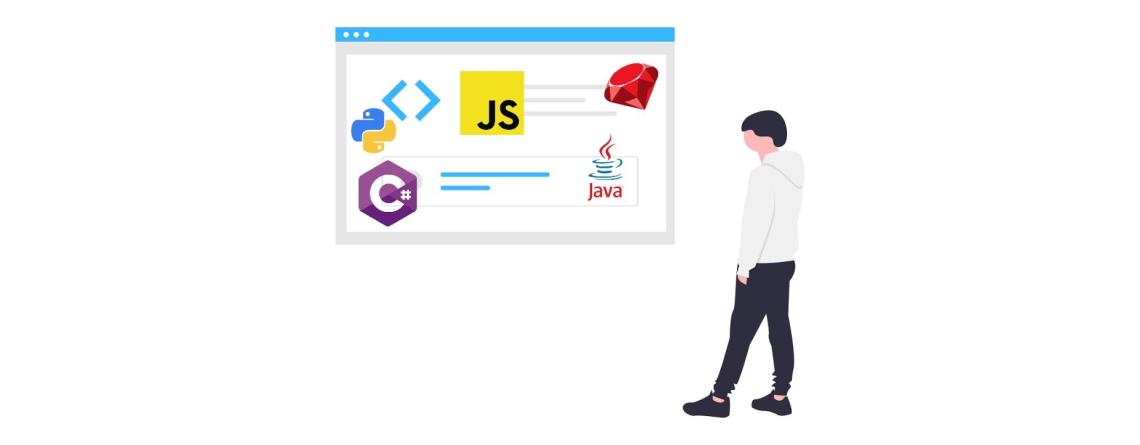

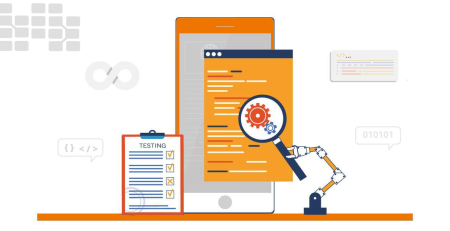

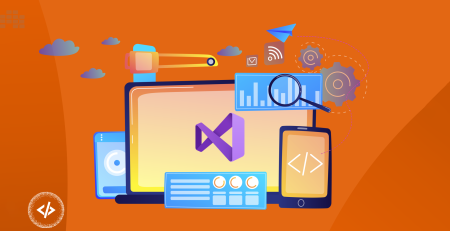

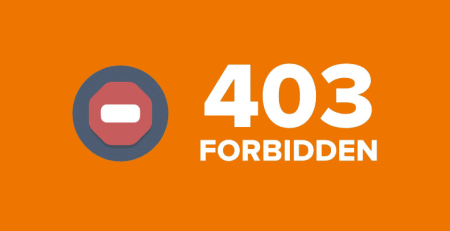

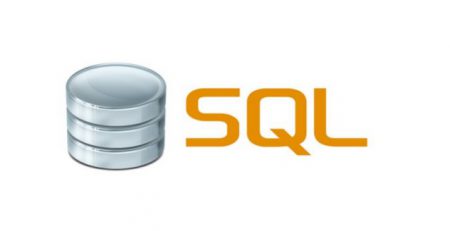

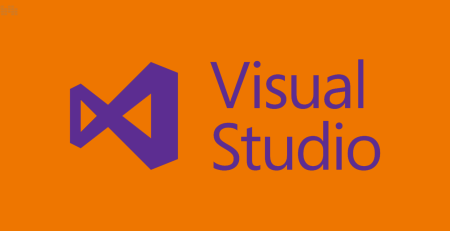
Leave a Reply